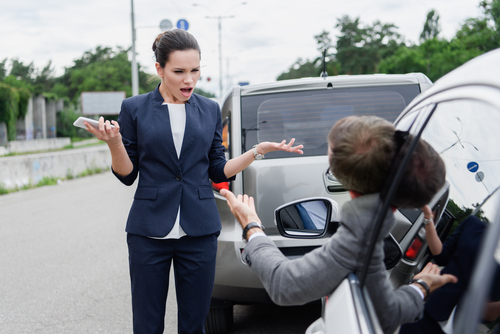Determining Fault in a Car Accident

You just got hit by a car. After you realize you aren’t hurt, you may notice significant vehicle damage. Your next thoughts may be: what happens next? Who will pay for this damage? Which driver is at fault?
Determining fault in a Florida car accident is not always cut and dry. You may think the other driver was clearly at fault, but the insurance adjuster may claim that you played a role in the crash as well.
Whether or not you can recover compensation for your percentage of negligence will depend on state laws. For example, Florida has comparative negligence laws. This means that your compensation will be reduced based on your degree of fault. For example, if you expected to receive $100,000 in damages, but you were determined to be 20% at fault, then your damage award would be reduced by 20%, meaning you would receive $80,000.
For the most part, insurance companies determine liability based on negligence. The police report plays a key role in determining liability. The report will detail what happened, what laws were broken, what citations were given and who the police officer determines to be at fault. Therefore, you should always call the police after a crash, no matter how minor it may seem. There are other ways to determine fault.
Evidence
The evidence you gather at the crash scene can make or break your case, so be sure to write down everything about the crash. What was the weather like? What was the other driver doing before the crash? Take photos. If anyone witnessed the crash, get their information. State the facts and avoid admitting fault.
Traffic Laws and General Rules
Many accidents happen because someone was breaking the law. For example, some drivers run stop signs or red lights. The driver may have been weaving in and out of lanes because they were intoxicated. The driver may have rear-ended you because they were speeding.
General rules also apply. For example, if you were rear-ended, the driver who rear-ended you is generally at fault. That’s because the law requires them to leave sufficient room between themselves and drivers in front. Tailgating is illegal, so it is assumed that the driver behind you was following you too closely.
A general rule also applies to accidents involving left turns. The oncoming driver who is going straight has the right of way. Therefore, the person making a left turn is considered to be at fault if they collide with the oncoming vehicle. However, there are some exceptions. If the driver of the oncoming vehicle was running a red light or speeding, then they would be considered partially at fault.
Get Legal Help for Your Florida Car Accident Case
While fault is clear in some car accidents, determining liability in some cases can be quite complicated. It’s best to have an experienced lawyer on your side to investigate your case.
The Tampa car accident lawyers at Pawlowski//Mastrilli Law Group can help. We can determine liability and help you get the compensation you need to pay for your damages. Call 813-242-4404 or fill out the online form to schedule a free consultation today.
Resource:
esurance.com/info/car/how-fault-is-determined-after-a-car-accident











